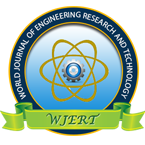| All | Since 2020 | |
| Citation | 172 | 110 |
| h-index | 7 | 5 |
| i10-index | 1 | 0 |
WJERT Citation 
Login
News & Updation
Abstract
A STRATEGY FOR PRESERVING URBAN AND ARCHITECTURAL HERITAGE IN THE HERITAGE CITIES OF HADHRAMOUT REGION, YEMEN
Dr. Anwar Ahmed Baeissa*
ABSTRACT
The region of Hadhramout is rich with many architectural heritage sites. It is the heritage of its nation and civilized people whose history has witnessed the greatness of its cultural achievements throughout its long history. Some of this heritage sites has been able to survive. While many of them are threatened with danger either by falling or disappearing, or by many other factors including: tampering and intentional or unintentional negligence, as well as the modern urban creeping, or because of disasters such as heavy rains and torrential floods, wars and earthquakes, the thing that makes Hadhramout and its historical landmarks went into the grip of destruction. In this context, the aim of this paper is to take into consideration the dangers that threaten our architectural heritage, especially in the region of Hadhramout, which is rich with heritage buildings that are currently in catastrophic conditions. It also aims to take preventive measures to save what can be saved of this heritage so that it can survive and last for a long time. This paper focuses on dealing with heritage cities by reaching an integrated strategy for the management of the architectural and urban preservation of these cities, which constitutes a good procedure to reduce the deterioration that has affected our civilization heritage by laxity, extinction and demolition. It was, therefore, necessary to delve deep into the study and the problems that these regions suffer from and the violation against heritage values as well as mismanagement of heritage buildings because there are no regulations and legislations against their misuse and abuse. Therefore, the main objective of the study is to highlight these problems so that the goal becomes clear; i.e., the legislation of controlling regulations to deal with those areas regardless of place, time and society as to preserve the legacy of future generations and recollection of the place. Therefore, the study followed a clear methodology in which it deals with previous studies and shows positive and negative aspects of the issue in question in an inductive method. Besides, the study makes use of other instruments which include the analysis, photographing, and spatial presentation of the experiments to form a clear picture and a broader framework of the study vision. Consequently, the results appear in the context required for the development of regulations and procedures to ensure the implementation of compatibility projects to control the demolition of heritage buildings, changing them, constructing new buildings, or changing the general landscape of the areas or the site of urban heritage as to comply with the vision of the authority responsible for following up the regulations of preserving urban heritage. This can be achieved with taking into account the integration and harmony among these buildings as a combined heritage site and as one of the most important principles of dealing with the traditional fabric that cannot be found in most European cities. In conclusion, this study seeks for certain guidelines in the form of a strategy for preserving urban and architectural heritage in the heritage cities of Hadhramout region.
[Full Text Article] [Download Certificate]
